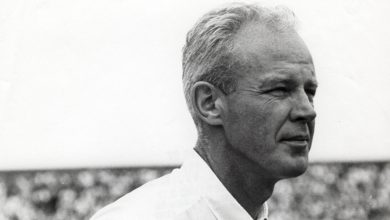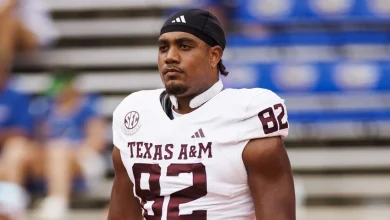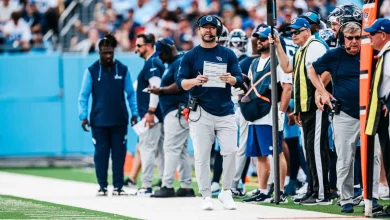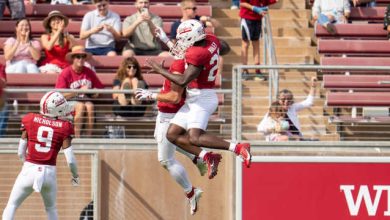Recent court decisions regarding athlete eligibility will shortly help Georgia football.
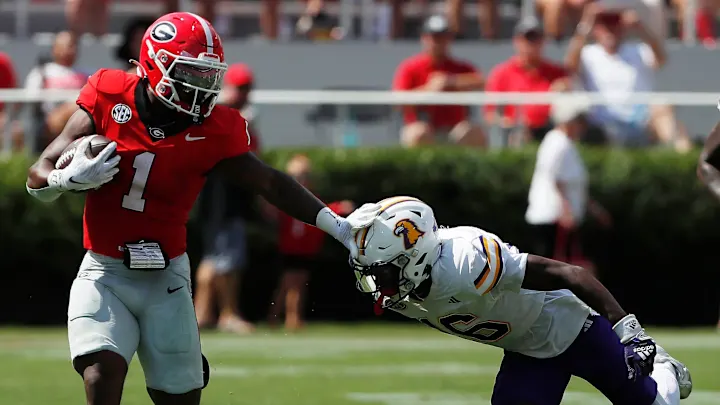
The world of college athletics, particularly college football, has undergone significant changes over the past few years, primarily surrounding issues of athlete eligibility, compensation, and the broader NCAA landscape. Recently, several court decisions have made waves regarding the eligibility of athletes in college sports, with particular attention being paid to the way in which eligibility is determined for athletes in high-profile programs like Georgia Football. These decisions have the potential to create substantial impacts for programs across the nation, including Georgia’s football program, one of the most dominant forces in college football in recent years.
In this article, we’ll explore the recent court decisions surrounding athlete eligibility, how these decisions are shaping the landscape of college football, and how they will specifically help Georgia Football, which has consistently been at the forefront of the college football scene. We will break down key legal rulings, analyze their potential effects on college football as a whole, and understand why Georgia may stand to benefit significantly from these changes.
The Evolution of NCAA Athlete Eligibility Rules
The history of college athlete eligibility has been marked by a series of controversies and legal challenges. In the past, the National Collegiate Athletic Association (NCAA) set stringent rules that often placed limits on the ability of college athletes to earn compensation, transfer freely, or retain eligibility. For decades, athletes were prohibited from earning compensation beyond their scholarships, and strict rules governed their eligibility to play based on academic standards, amateur status, and transfer limitations.
However, in recent years, the landscape of college athletics has shifted dramatically. With growing legal challenges and mounting pressure from athletes and advocacy groups, the NCAA has had to revise its approach to eligibility. This began with landmark decisions, such as the 2021 Supreme Court ruling in NCAA v. Alston, which ruled in favor of athletes gaining access to benefits related to education, including scholarships and other educational resources. This ruling opened the door for broader changes regarding athletes’ rights and compensation.
Alongside these changes, new legal battles have centered around athletes’ ability to transfer between schools and the impact of the NCAA’s transfer portal, as well as the ability of athletes to receive NIL (Name, Image, and Likeness) compensation. The NCAA had historically imposed restrictions on athlete movement between schools, which often resulted in athletes being forced to sit out a year when transferring. However, recent legal decisions have dismantled these rules, allowing athletes to transfer freely without penalty.
This legal landscape is still evolving, and more decisions are expected in the coming years that will impact eligibility, especially in high-profile sports like college football. These changes are reshaping how programs recruit, retain, and develop talent, and Georgia Football stands to benefit from these shifts in significant ways.
The Key Court Decisions Impacting Athlete Eligibility
Several recent court rulings have directly or indirectly addressed the eligibility of college athletes, with wide-reaching implications for college football. These decisions are likely to have a lasting impact on the way that college football programs, including Georgia Football, operate moving forward.
1. NCAA v. Alston (2021)
One of the most significant legal decisions in recent years was the NCAA v. Alston case, decided by the U.S. Supreme Court in 2021. The case centered around whether the NCAA’s restrictions on education-related benefits for athletes violated antitrust laws. In a unanimous decision, the Supreme Court ruled that the NCAA could no longer prevent athletes from receiving educational benefits beyond their scholarships, including stipends for living expenses and other education-related benefits.
This ruling was a major win for college athletes and set the stage for further reforms in college athletics. While it did not allow athletes to receive direct financial compensation for their athletic performance (which would be addressed later with NIL rulings), it established the principle that the NCAA’s restrictions on student-athlete benefits were unfair and in violation of antitrust laws. The Alston ruling paved the way for further challenges to the NCAA’s ability to regulate athlete eligibility and compensation.
Impact on Georgia Football: For Georgia Football, the Alston ruling provided the legal foundation for further athlete compensation reforms. With the ability for athletes to receive additional educational benefits, Georgia now has the opportunity to offer prospective recruits a more attractive package, which could help with recruitment and retention. Players who may have previously been deterred by the financial limitations of attending college could now see a more favorable financial environment within Georgia’s football program, making the Bulldogs more competitive in attracting elite recruits.
2. The NIL Revolution: O’Bannon v. NCAA (2014) and Subsequent Developments
While the Alston case addressed education-related benefits, another seismic shift in college athlete eligibility and compensation came in the form of NIL (Name, Image, and Likeness) rights. The O’Bannon v. NCAA case, which began in 2014, helped lay the groundwork for changes to NIL rules, though it was not a definitive ruling on NIL itself. Instead, it focused on the NCAA’s restrictions on athletes receiving compensation for the use of their names, images, and likenesses.
In 2021, the NCAA officially suspended its rules prohibiting athletes from profiting off their NIL. This decision was influenced by both legal challenges and pressure from state laws, as several states passed legislation allowing NIL compensation for college athletes. The suspension of these rules effectively allowed athletes to sign endorsement deals, monetize their social media presence, and receive compensation from a variety of sources.
Impact on Georgia Football: The implementation of NIL rights has been a game-changer for college football programs, and Georgia Football has been quick to capitalize on the opportunity. As one of the top football programs in the country, Georgia can offer recruits the chance to earn substantial NIL compensation during their time in college. This has allowed Georgia to compete more effectively with other powerhouse programs in attracting top recruits who are seeking both athletic and financial opportunities. For example, high-profile Georgia players like Brock Bowers and Jalen Carter have already signed lucrative NIL deals, and future players can expect similar opportunities.
The ability to offer NIL deals could also help Georgia retain key players who may otherwise consider entering the NFL Draft earlier than expected. With the financial incentives of NIL deals, Georgia can keep star players on the roster for longer periods, providing the team with a competitive edge in the SEC and national championship races.
3. The Transfer Portal and Free Agency Model
Another recent legal shift that has impacted eligibility and player movement is the creation and widespread use of the NCAA transfer portal. The transfer portal allows athletes to enter their names into a system where coaches can see which players are looking to transfer. It also removes the requirement for athletes to sit out a year when transferring, a rule that was previously enforced by the NCAA.
The transfer portal, which was officially implemented in 2018, has been a game-changer for college football programs. Players who are dissatisfied with their current programs, or who simply want to find a better opportunity, can now move freely between schools without facing penalties. This has created a dynamic and rapidly evolving player movement system that allows athletes to make decisions based on their best interests.
Impact on Georgia Football: Georgia Football has greatly benefited from the transfer portal, bringing in high-profile players to supplement their roster. The Bulldogs have been able to bolster their defense, offense, and special teams by targeting players who have proven themselves at other programs. For example, Georgia added key players like quarterback J.T. Daniels (from USC) and running back Kendall Milton (from LSU) in recent years to add depth and experience to their team.
The legal backing behind the transfer portal and the lifting of the one-year sit-out rule has given Georgia the flexibility to improve its roster quickly. The Bulldogs are not bound by the traditional recruiting cycle alone and can add talent from other programs if they see an immediate need. This is particularly important as Georgia aims to continue its dominance in the SEC, where teams are constantly looking to upgrade their rosters to keep pace with Alabama, LSU, and other top programs.
How Recent Court Decisions Will Help Georgia Football
Now that we’ve examined some of the most significant legal rulings affecting athlete eligibility, it’s clear that Georgia Football stands to benefit in several ways.
- Enhanced Recruitment and Retention: With the expanded ability for athletes to receive NIL compensation, Georgia can continue to recruit top-tier talent while offering them financial opportunities. The program’s deep ties to corporate partners, boosters, and successful alumni can lead to lucrative endorsement deals for athletes, making the school an even more attractive destination for recruits.
- Transfer Portal Advantages: The recent court decisions surrounding the transfer portal give Georgia a strategic advantage in player acquisition. The Bulldogs have proven to be adept at leveraging the portal to supplement their roster with experienced players, allowing them to build depth and address weaknesses on their team quickly. This ability to replenish the roster with high-level talent makes Georgia an even more formidable opponent in the SEC and on the national stage.
- More Financial Flexibility: The ability for Georgia’s athletes to access education-related benefits and NIL compensation allows the program to remain competitive in a rapidly changing college football landscape. With financial incentives now part of the recruitment and retention process, Georgia has the opportunity to secure elite talent for longer periods of time, thus increasing the program’s chances of sustaining success.
Conclusion
Recent court decisions surrounding athlete eligibility are poised to have a profound impact on the future of college football, and Georgia Football is in an excellent position to take advantage of these changes. From the Alston ruling, which allowed athletes to receive additional educational benefits, to the expansion of NIL rights and the transfer portal, these legal shifts have changed the way college football programs operate.
Georgia, already a powerhouse in college football, stands to benefit significantly from these decisions. With enhanced recruitment and retention opportunities, increased financial flexibility, and the ability to quickly improve the roster through the transfer portal, Georgia Football is well-positioned for continued success on the national stage.
As the legal landscape continues to evolve, expect Georgia Football to remain a dominant force in college football, leveraging these changes to maintain its place as one of the top programs in the country.



